The real-life Atlantis? Archaeologists discover new treasures in a mysterious underwater city off the coast of Egypt dating back at least 1,000 years
Archaeologists have discovered new treasures at Heracleion, the ‘lost’ Egyptian city that sank into the Mediterranean Sea more than 1,000 years ago.
The ‘precious’ new finds, shared by French marine archaeologist Franck Goddio, include gold jewelry, silver bowls and a strange pouring device in the shape of a duck.
There’s also a Djed – a pillar-like symbol from Egyptian hieroglyphs made from the blue stone lapis lazuli – and an eerie ceramic hand protruding from the sediment.
For centuries, Heracleion was Egypt’s largest port on the Mediterranean before the foundation of Alexandria by Alexander the Great in 331 BC.
Heracleion has been described as the Egyptian version of Atlantis, although unlike Heracleion, many doubt whether the mythical island ever existed.
Gold objects, jewelry and a Djed pillar (a symbol of stability and made of the blue stone lapis lazuli) were found near the remains of Heracleion. They probably date from the 5th century BC
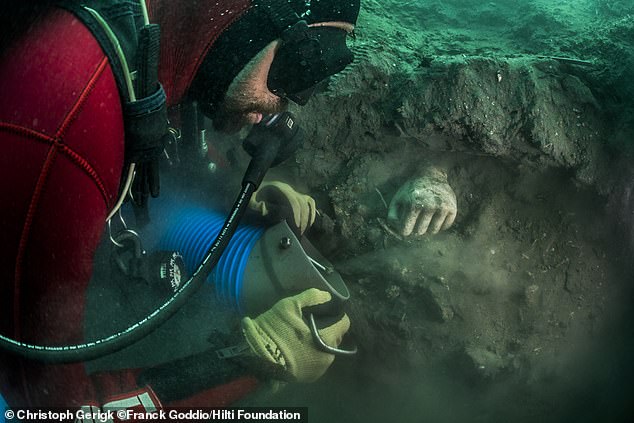
A hand emerges from the sediment during an archaeological dig in Heracleion. It dates from the 5th century BC and early 4th century BC, probably from Cyprus
Mr Goddio, who originally rediscovered Heracleion in 2000, described the new finds on his website as ‘precious’ and ‘moving’.
“They testify to the wealth of this shrine and the piety of the port city’s former inhabitants,” he said.
According to Mr. Goddio, Heracleion was founded around the 8th century BC and became the mandatory gateway to Egypt for all ships coming from the Greek world.
However, Heracleion suffered ‘several natural disasters’ – probably earthquakes and tsunamis – before sinking completely into the depths of the Mediterranean, probably in the 8th century AD.
The remains of the port city are now located under the sea, about seven kilometers from the present-day coast of Egypt.
The recent excavation, carried out in July this year, covered the southern canal of the lost city, where there are the remains of a large temple dedicated to Amun, the Egyptian god of the air.
Huge blocks of stone from the temple collapsed in a “catastrophic event” dating to the mid-second century BC, Goddio said – about 1,000 years before the entire city was lost.
Among the finds at the temple site were silver ritual instruments, gold jewelry and fragile alabaster containers, probably for perfumes.
Two ritual bowls intended for ‘libations to the gods’ were made of silver, which was considered extremely valuable in ancient Egypt.
Meanwhile, a beautiful Djed was made from the semi-precious stone lapis lazuli, long appreciated for its intense blue color.
“It is extremely moving to discover such delicate objects, which have remained intact despite the violence and scale of the catastrophe,” Mr Goddio said.
Below the temple area they also found underground structures, supported by well-preserved wooden posts and beams, dating back to the 5th century BC.
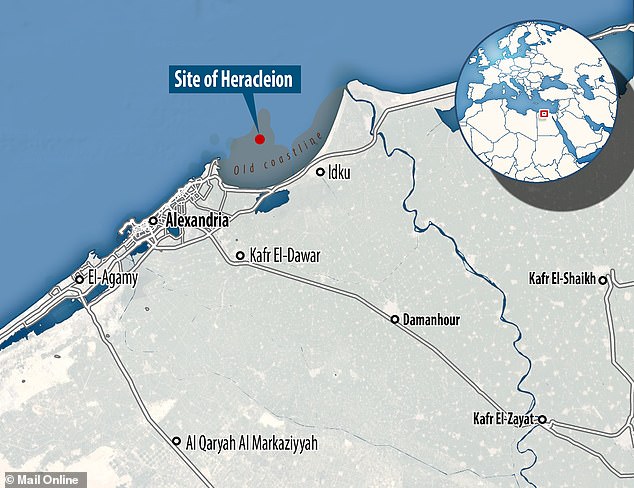
The city of Heracleion was one of the most important trading centers in the Mediterranean. Before Alexandria was founded by Alexander the Great in 331, Heracleion was Egypt’s largest port city
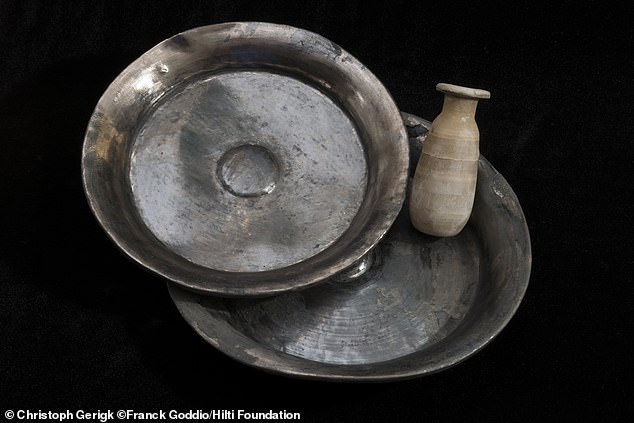
Two silver ritual bowls for libations to the gods from the temple treasury. Silver was considered extremely valuable in ancient Egypt. An alabaster container for ointments and perfumes was found among them
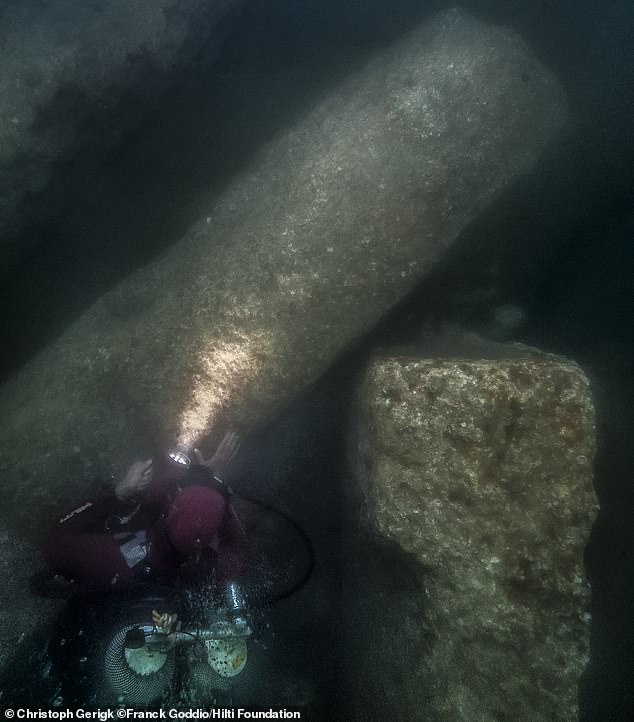
After the excavation, an archaeological diver stares at the huge blocks of the Amun Temple, which fell into Heracleion’s southern canal in the mid-second century BC. They were discovered under about 3 meters of hard clay
East of the Amon Temple they also discovered a Greek shrine dedicated to Aphrodite, the ancient Greek goddess of sexual love and beauty.
The shrine yielded imported bronze and ceramic objects, including a customary object in the shape of a duck surrounded by ceramic pots and shields.
The delicate pourer, although dating from the 4th century BC, could have been used for pouring wine, possibly indicating some form of Greek trade.
“This illustrates that the Greeks who were allowed to trade and settle in the city during the time of the pharaohs of the Saïte dynasty (664 – 525 BC) had their shrines to their own gods,” he added. Goddio to it.
‘The presence of Greek mercenaries is also evident from the numerous finds of Greek weapons.’
Although the French explorer discovered Heracleion more than twenty years ago, new geophysical prospecting technologies have made it possible to detect cavities and objects buried under meters-thick layers of clay, allowing them to detect more objects.

A delicate bronze duck-shaped cupbearer is discovered among 4th-century BC ceramics at the site of a newly discovered Greek sanctuary to Aphrodite at ThonisHeracleion.
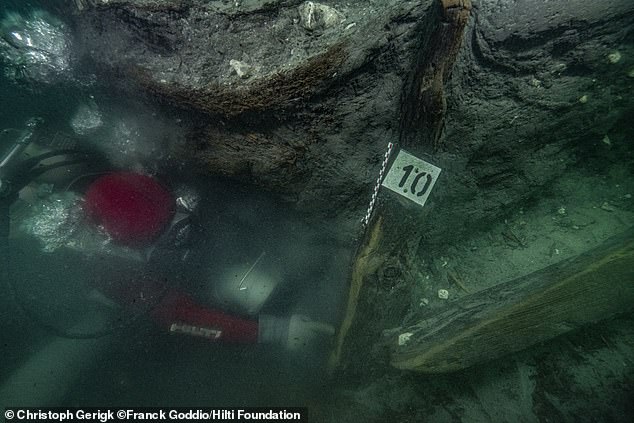
Very well preserved underground wooden structures were discovered below the floor level of the Amun Temple. 5th century BC
Previous finds from Heracleion were already on display in the British Museum in London, such as statues of pharaohs and gods.
While there is little doubt that Heracleion existed, the same cannot be said about Atlantis, to which it is being compared.
It is said that the so-called ancient city was destroyed and submerged under the Atlantic Ocean, but that is not the case it is generally believed to have been invented by the Greek philosopher Plato.
Earlier this year, another research team revealed that they had found the German equivalent of Atlantis: the city of Rungholt, which was sunk by a storm in 1362.
